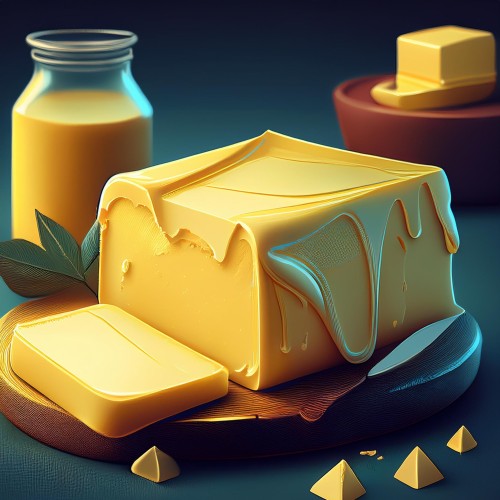Subtotal تومان0
Animal-derived and processed dairy butter are treasures of rich flavor and creamy texture, elevating culinary creations with their natural goodness and versatility.
Dairy butter is one of the most consumed and popular animal products that is made from milk fat. This product is produced from the milk of cows or other lactating animals such as sheep and goats. The process of producing butter is done by separating milk fat and then stirring and changing its shape to a solid state. Due to its delicious taste and soft and creamy texture, this product is used as one of the main ingredients in cooking, baking and even daily consumption with breadIn addition to its excellent taste, butter is a good source of energy and contains fat-soluble vitamins such as vitamins A, D, E, and K. These vitamins are important for the health of vision, bones and immune system. Also, butter contains essential fatty acids that are useful for the optimal functioning of the body. On the other hand, some types of dairy butters, such as local or organic butters produced from natural milk, have better properties than processed types. Butter also plays a key role in baking many dishes and desserts, and is used as a flavoring additive in a variety of foods, including breads, cakes, biscuits, and sauces.




Expert Review of Dairy Butter
1- Chemical composition of butter:
2- Types of butter:
3- Food uses of butter:
4- Nutritional value of butter:
5- Effect on health:
6- Environmental considerations:
7- Summary:
By sourcing butter from the best ranches and buying directly from producers, we guarantee unparalleled quality and taste. By constantly reviewing the production process, we always offer you a product with the highest standards.

"Iranian butter is known as one of the highest quality dairy products in the world due to its production from fresh milk in local farms, traditional and natural processing, rich flavor and unique nutritional properties. These features make it popular in the domestic and foreign markets. It has become international."

Emphasizing quality and trust, Atra always strives to meet the needs of customers and provide a unique experience of quality products. We attach great importance to customer satisfaction and are always by our customers' side by using the best raw materials and premium after-sales service.

Adhering to complete transparency in the contracts, Atra clearly specifies all the conditions, rights and obligations in order to gain the confidence and trust of the customers and prevent any ambiguity and dispute.
